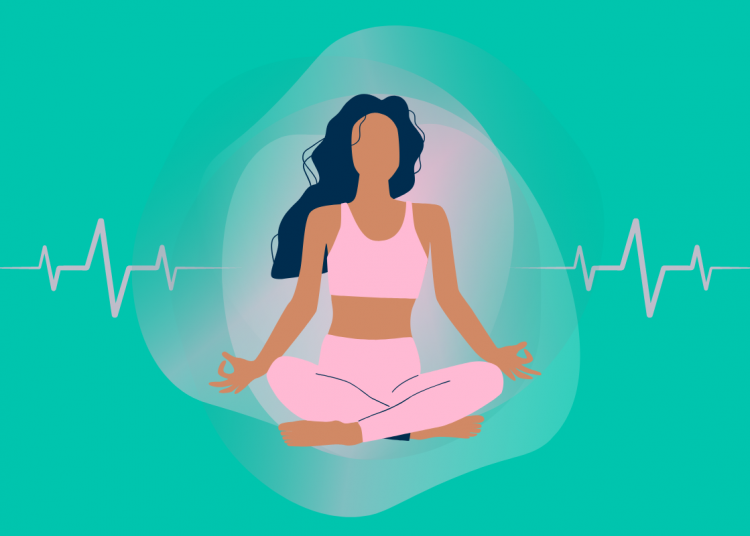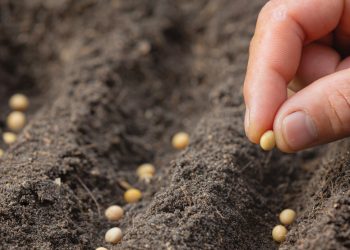
Breathing is an essential function of the body, but it is often overlooked as a tool for improving your overall health and well-being. The way you breathe can have a significant impact on your physical and mental health; and breathing techniques can be used to improve everything from stress and anxiety to lung function and posture.
In this article, various breathing techniques, including block breathing, will be explored and it will show why it is essential to breathe correctly. Different breathing techniques and their benefits will be discussed.
Practising breathing exercises regularly can help you develop a deeper awareness of your breath and promote optimal breathing patterns. These exercises can help you to become more in tune with your body and enhance your physical and mental well-being.
Breathing techniques can have a significant impact on your physical and mental health. Studies have shown that slow, deep breathing can reduce anxiety and depression symptoms and improve the heart rate variability (Pilkington, Kirkwood, Rampes and Richardson, 2005).
Another study found that yoga, which emphasises proper breathing, can reduce stress and improve overall well-being (Streeter et al., 2012). Moreover, research has shown that slow breathing can activate the parasympathetic nervous system, which helps to reduce stress and anxiety (Zaccaro et al., 2018).
Why it is important to breathe correctly
Breathing correctly is essential because it helps you to optimise the flow of oxygen to your body. When you breathe correctly, you increase the oxygen flow to your cells, which can help improve your overall physical health.
Proper breathing techniques can also help to reduce stress and anxiety, which can have a significant impact on your mental health. Additionally, breathing correctly can improve your posture, which can reduce the risk of back pain and other posture-related issues.
Benefits
Breathing techniques have a range of benefits for both your physical and mental health. These benefits include:
- Stress and anxiety reduction: Breathing techniques can help reduce stress and anxiety by activating the parasympathetic nervous system, which helps calm the body and mind.
- Improved lung function: Correct breathing can help improve the lung function by increasing the amount of oxygen that enters the body, which is improving the efficiency of the respiratory system.
- Posture improvement: Proper breathing techniques can help improve the posture by strengthening the muscles that support the spine and promoting better alignment.
- Increased mental clarity: Breathing techniques can help increase mental clarity by reducing distractions and improving focus.
- Better sleep: Breathing techniques can help improve sleep quality by reducing stress and promoting relaxation.
Different breathing techniques
Improve your physical and mental health with these techniques:
DEEP BREATHING
This technique involves taking slow, deep breaths from the diaphragm, filling the lungs with air and exhaling slowly. It is excellent for reducing stress and anxiety, lowering blood pressure and calming the mind.
Deep breathing allows you to increase the amount of oxygen in your body, which can help improve mental clarity and physical performance. It can also help reduce the production of stress hormones such as cortisol, which can have a positive effect on your overall health.
PRACTISE DEEP BREATHING:
- One way to practise deep breathing is by sitting or lying down in a comfortable position, placing one hand on your belly and the other on your chest.
- Inhale slowly through your nose, feeling your belly expand as you breathe in.
- Hold your breath for a few seconds before exhaling slowly through your mouth, feeling your belly contract as you exhale.
- Repeat this cycle for several minutes, focussing on your breath and letting go of any thoughts or distractions.
DIAPHRAGMATIC BREATHING
Diaphragmatic breathing, also known as belly breathing, is similar to deep breathing and involves breathing from the diaphragm instead of the chest. This technique can help strengthen the diaphragm muscles and improve the overall posture.
When you breathe from your diaphragm, you expand your belly, which can help improve your lung capacity and reduce tension in the neck and shoulders. Diaphragmatic breathing can also help improve digestion and reduce symptoms of gastrointestinal disorders.
PRACTISE DIAPHRAGMATIC BREATHING:
- Sit or lie down in a comfortable position.
- Place one hand on your belly and the other on your chest.
- Inhale deeply through your nose, feeling your belly expand as you breathe in.
- Hold your breath for a few seconds before exhaling slowly through your mouth, feeling your belly contract as you exhale.
- Repeat this cycle for several minutes, focussing on your breath and letting go of any thoughts or distractions.
ALTERNATE NOSTRIL BREATHING
This kind of breathing involves breathing through each nostril alternatively. This technique can help balance the body’s energy and promotes relaxation. It is an effective way to calm the mind and reduce stress and anxiety. Alternate nostril breathing can also help improve your lung function, boost immunity and improve sleep quality.
PRACTISE NOSTRIL BREATHING:
- Sit in a comfortable position and place your left hand on your left knee.
- Bring your right hand to your nose and use your thumb to close your right nostril.
- Inhale deeply through your left nostril, then use your ring finger to close your left nostril and release your thumb from your right nostril. Exhale slowly through your right nostril.
- Inhale deeply through your right nostril, then use your thumb to close your right nostril and release your ring finger from your left nostril. Exhale slowly through your left nostril.
- Repeat this cycle for several minutes, focussing on your breath and letting go of any thoughts or distractions.
KAPALABHATI BREATHING
Kapalabhati breathing, also known as skull-shining breath, is a technique that involves short, sharp exhalations followed by passive inhalations. This technique can help stimulate the nervous system, improve digestion and increase mental clarity. Kapalabhati breathing can also help reduce symptoms of asthma and allergies, as well as improve the lung function.
PRACTISE KAPALABHATI BREATHING:
- Sit in a comfortable position with your spine straight and your hands on your knees.
- Take a deep breath in, then exhale sharply through your nose, pulling your belly in towards your spine.
- Follow the sharp exhalation with a passive inhalation, allowing your belly to expand.
- Repeat this cycle for several minutes, focussing on your breath and letting go of any negative thoughts.
BLOCK BREATHING
This breathing technique, also known as box breathing or four-square breathing, is a technique that involves inhaling for a count of four, holding your breath for a count of four, exhaling again for a count of four and holding your breath again for a count of four. This technique can help reduce stress and anxiety, increase mental clarity and promote relaxation.
PRACTISE BLOCK BREATHING:
- Find a quiet place to sit or lie down.
- Close your eyes and take a deep breath in through your nose for a count of four.
- Hold your breath for a count of four, then exhale slowly through your mouth for a count of four.
- Hold your breath again for a count of four before repeating the cycle.
- Repeat this cycle for several minutes, focussing on your breath and letting go of any thoughts or feelings.
Summary
Breathing techniques are an effective way to improve both your physical and mental health. Proper breathing techniques can help increase oxygen flow to the body, reduce stress and anxiety, improve the lung function and promote relaxation. The different techniques explained above can be used to achieve these benefits.
It is recommended to practise these techniques regularly, either on their own or as part of a meditation or mindfulness practice, to experience their full benefits. Breathing techniques are simple, accessible and can be practised anywhere, making them an excellent tool for improving your overall well-being.
It’s clear that there are many different breathing techniques that can be used to promote mental and physical well-being. Whether you are looking to reduce stress and anxiety, improve your focus and attention, or enhance your athletic performance, there is likely a breathing technique that can help you achieve your goals.
So why not give it a try? Spend a few minutes each day practising deep breathing, diaphragmatic breathing or other breathing techniques, and see how it affects your mood and overall sense of well-being. With regular practice, you may find that breathing becomes a natural and effective way to manage stress, improve your mental health and enhance your quality of life.
References
- Brown RP and Gerbarg PL, 2005. Sudarshan Kriya yogic breathing in the treatment of stress, anxiety and depression: Part I-neurophysiologic model. Journal of alternative and complementary medicine (New York, N.Y.), 11(1), 189-201
- Cabral L, Da Silva JB, Pinto VL and Duarte JA, 2021. The impact of deep breathing exercises on health outcomes: An integrative review. Complementary therapies in clinical practice, 43, 101373
- Cheng HY and Wang YC, 2016. The effects of diaphragmatic breathing on attention, negative affect and stress in healthy adults. Frontiers in psychology, 7, 914
- Hoffman JW, Benson H, Arns PA, Stainbrook GL, Landsberg GL, Young JB and Gill A, 1982. Reduced sympathetic nervous system responsivity associated with the relaxation response. Science, 215(4529), 190-192
- Khargie L, Gupta V and Kumar D, 2020. The effects of yogic breathing exercises on mood and depression: A review. International Journal of Yoga, 13(1), 3-9
- Kwekkeboom KL and Gretarsdottir E, 2006. Systematic review of relaxation interventions for pain. Journal of nursing scholarship, 38(3), 269-277
- Ma X, Yue ZQ, Gong ZQ, Zhang H, Duan NY, Shi YT, Wei GX and Li YF, 2017. The effect of diaphragmatic breathing on attention, negative affect and stress in healthy adults. Frontiers in psychology, 8, 874
- Zaccaro A, Piarulli A, Laurino M, Garbella E, Menicucci D, Neri B, Gemignani A and Lotti J, 2018. How breath control can change your life: A systematic review on psycho-physiological correlates of slow breathing. Frontiers in human neuroscience, 12, 353









